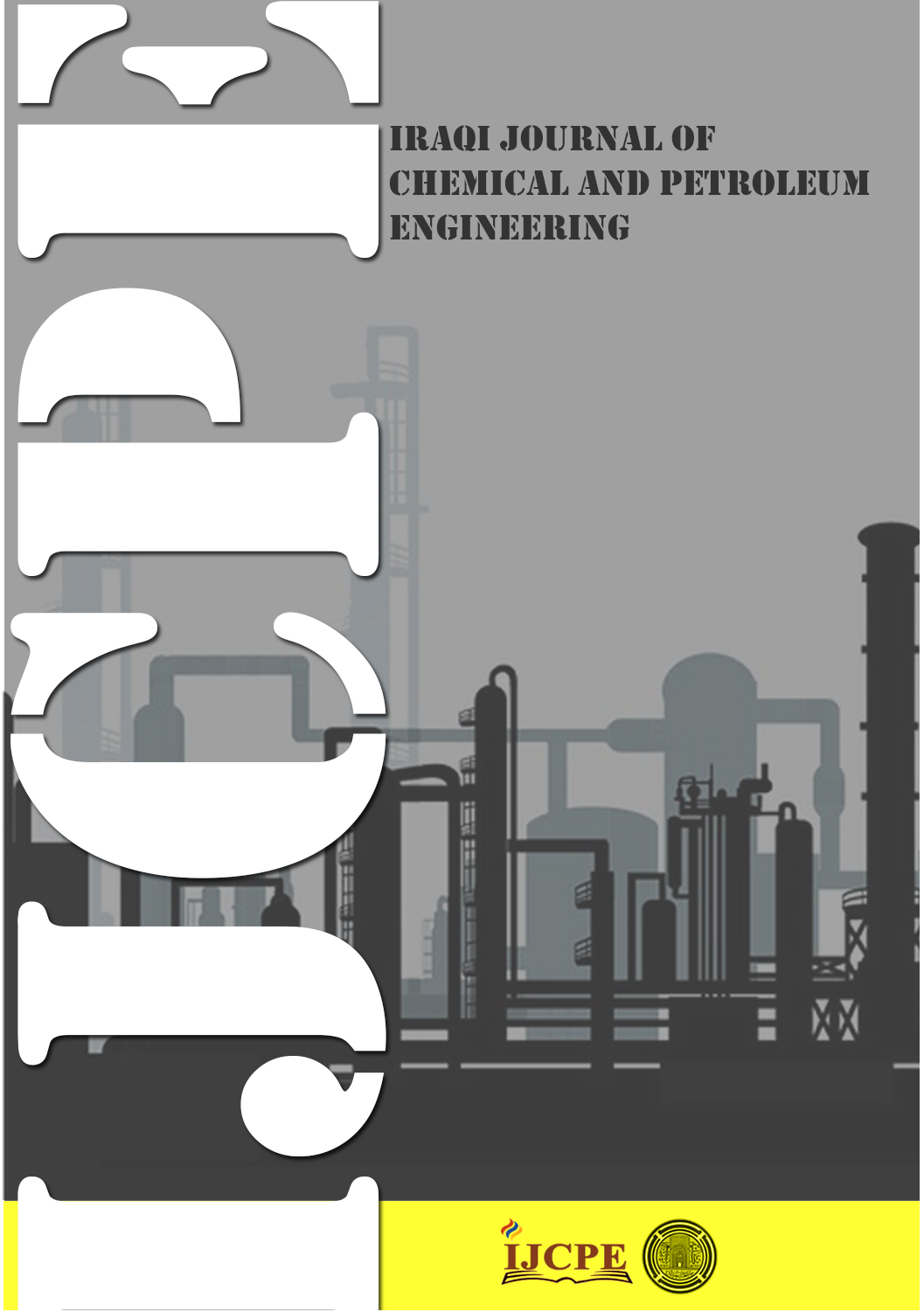Dynamic modeling for optimal subsurface reservoir fluid mapping in Mature oil fields
DOI:
https://doi.org/10.31699/IJCPE.2025.2.3Keywords:
Modeling; mature field; well placement; fluid saturation; reservoir management; subsurface studies; Abu Redeis FieldAbstract
Development of a mature oil reservoir blocks strategy in optimizing hydrocarbon production from mature oil fields. Using dynamic modeling techniques together with subsurface interpretations that were based on sharply adjacent well data, the study has presented new development well placements. Production data studies, pressure surveys, and detailed subsurface studies will be integrated to improve the understanding of the reservoir behavior to predict reservoir performance. The key findings indicate high increments in oil production on account of the implementation of new development wells. The current research provides not only empirical evidence supporting the efficacy of strategic drilling but also lends a structured workflow applicable for similar mature oil fields, thus providing practical means for increasing production and improvement in field life. Opportunities that deliver high value yet have limited associated risks and costs are typically characterized in general by short payout periods and reinvestment of savings. Unlocking residual potential from low-productivity or shut-in wells, maximizing asset value, and using information to drive decisions on optimizing is an asset development strategy. These strategies can only be effectively implemented if inter-disciplinary teams work together to ensure that data is comprehensively analyzed and all solutions are formulated in line with these analyses.
This work discusses the efficiency of developing non non-drained oil reservoir blocks strategy in optimizing hydrocarbon production from mature oil fields. Using dynamic modeling techniques together with subsurface interpretations that were based on sharply adjacent well data, the study has presented new development well placements. The study of the Abu Rudeis oil field has laid the foundation for long-term optimization, integrating production data, pressure surveys, and geological studies into a comprehensive reservoir management strategy. The interdisciplinary approach ensured well-informed and targeted decisions, resulting in enhanced hydrocarbon recovery and improved field performance. Results from the three-dimensional grid that captured heterogeneity in the reservoir, the assignment of reservoir properties like porosity and permeability, and fluids distribution helped to leverage data-driven strategies and advanced technology, the field's sustainability and efficiency have been significantly improved, providing a strong foundation for future optimization efforts.
Received on 30/03/2025
Received in Revised Form on 02/05/2025
Accepted on 06/05/2025
Published on 30/06/2025
References
[1] A. Kerry, K.A. Rampersad, L.H. Shreeram H. McLean,” Field Improvement of Water Handling Offshore Trinidad” SPE Journal Projects Facilities & Construction, 2011, 6(2):82-90 https://doi.org/10.2118/132794-PA
[2] S. Farouk, Sh. Sen, S. Belal, M. Omran, A. Assal, “Assessment of the petrophysical properties and hydrocarbon potential of the Lower Miocene Nukhul Formation in the Abu Rudeis Sidri Field, Gulf of Suez Basin, Egypt” Geomech. Geophysics. Geo-energy-resources. 2023, 9(36):3-17. https://doi.org/10.1007/s40948-023-00572-w
[3] R. Kiran, C. Teodoriu, Y. Dadmohammadi,” Identification and Evaluation of Well Integrity and Causes of Failure of Well Integrity Barriers (A review)”, Journal Natural Gas Scociety Engineering, 2017, 45:511– 526. https://doi.org/10.1016/j.jngse.2017.05.009
[4] S. Dhawan,” Technology focus: well integrity” Journal Petroleum Technology 2014, 76 (01): 74–75. https://doi.org/10.2118/0114-0090-JPT
[5] F.J. Lucia, “Petrophysical parameters estimated from visual descriptions of carbonate rocks: A field classification of carbonate pore space” Journal of Petroleum Technology, 1983, 35(03): 629–637, https://doi.org/10.2118/10073-PA
[6] E. Manning, S.E. Ingebrigtsen, “Permeability of the continental crust: Implications of geothermal data and metamorphic systems”, Reviews of Geophysics, 1999,37(01): 127–150, Feb. 1999, https://doi.org/10.1029/1998RG900002
[7] M. Tabibzadeh, N. Meshkati,” Learning from the BP deep water horizon accident: risk analysis of human and organizational factors in negative pressure test”, Environment System Decision, 2014, 34:194–207, https://doi.org/10.1007/s10669-014-9497-2
[8] H. Zhang, H. Zhang, J. Li, Z. Cai,” Permeability and porosity prediction using logging data in a heterogeneous dolomite reservoir: An integrated approach”, Journal of Natural Gas Science and Engineering, 2021, 86: 103743, Feb. 2021, https://doi.org/10.1016/j.jngse.2020.103743
[9] L. Zha, Ch. Hu, J.A. Quaye, N. Lu, R. Peng,” Comparative analysis of 3D reservoir geologic modeling: A comprehensive review and perspectives”, Geoenergy Science and Engineering, 2025, 244:1-20, https://doi.org/10.1016/j.geoen.2024.213440
[10] M.S. Yakoot, M. S. Elgibaly, A.M. Ragab, “Well integrity management in mature fields: a state‑of‑the‑art review on the system structure and maturity”, Journal of Petroleum Exploration and Production Technology, 2021, 11:1833–1853. https://doi.org/10.1007/s13202-021-01154-w
[11] S.N. Dasgupta, M.R. Hong, I.A. Al-Jallal, “Reservoir characterization of Permian Khuff-C carbonate in the supergiant Ghawar field of Saudi Arabia”, Leading Edge, 2001, 20 (7): 706–717. https://doi.org/10.1190/1.1487282
[12] M. Rahimi, M.A. Riahi, „ Static reservoir modeling using geostatistics method: case study of the Sarvak Formation in an offshore oilfield”, Carbonate rocks and Evaporites, 2020, 35 (2):4-13, https://doi.org/10.1007/s13146-020-00598-1
[13] W. Zhang, J. Wang, Z. Li, G. Qu,“Geological modeling of thin and poor reservoir based on well seismic multi-disciplinary”, 2nd International Conference on Oil & Gas Engineering and Geological Sciences, Dalian, China, 2020 https://doi.org/10.1088/1755-1315/558/3/032001
[14] A.E. Okoli, O.E. Agbasi, A.A. Lashin, S. Sen, S, “Static reservoir modeling of the Eocene clastic reservoirs in the Q-field, Niger Delta, Nigeria”, Natural Resource Research, 2021, (30): 1411–1425. https://doi.org/10.1007/s11053-020-09804-2
[15] J. Dethlefs J , B. Chastain, “Assessing well-integrity risk: a qualitative model”, SPE Journal Drilling Completion, 2012, 27(2):294–302., https://doi.org/10.2118/142854-PA
[16] L.M. Jiskani, F.I. Siddiqui, A.G. Pathan, “Integrated 3D geological modeling of Sonda-Jherruck coal field”, Pakistan. Journal Sustain. Minerals,2018, 17 (3): 111–119, 2018. https://doi.org/10.1016/j.jsm.2018.06.001
[17] M.M. Salim, G.M. Hamada, A.A. Dahab, “Exploring Hydrocarbon Reserves in Mature Oil Fields by Interpreting the Subsurface and Using Dynamic Modeling”, 2024, SPE-223274-MS Paper presented at the Mediterranean Offshore Conference, Alexandria, Egypt, https://doi.org/10.2118/223274-MS
[18] B. Demiral, F. Gümrah, E. Okandan, “Reservoir Description and Development of a Mature Oil Field”, Energy Sources, 2001, 23 (2): 165-175. https://doi.org/10.1080/00908310151092371
[19] M.I. Abdel-Fattah, J.D. Pigott, M.S. El-Sadek,” Integrated seismic attributes and stochastic inversion for reservoir characterization: insights from Wadi, field (NE Abu-Gharadig Basin, Egypt)”, Journal African Earth Science,2020,161:1-17 https://doi.org/10.1016/j.jafrearsci.2019
[20] M.A. Abdelwahab, A.A. Radwan, H. Mahmoud H, A. Mansour., “Geophysical 3D-static reservoir and basin modeling of a Jurassic estuarine system (JG-Oilfield, Abu Gharadig basin, Egypt)”, Journal Asian Earth Science. 2022; 225:105067. https://doi.org/10.1016/j.jseaes.2021.105067
[21] M. Abdelfatah, M. Hanafy, M. Hamadan, “Integrated 3D Reservoir Modeling and Tectonic Evaluation of the Upper Cretaceous Bahariya Formation in the Burg El Arab Area, Egypt: Implications for Hydrocarbon Exploration and Production Strategies”, Egyptian Journal of Petroleum, 2024, 33: 259-268, https://doi.org/10.62593/2090-2468.1026
[22] A. Mansour, E. Gerˇslov´ a, I. Sýkorova, ´O. Vor ¨ o¨ˇs, “Hydrocarbon potential and depositional paleoenvironment of a Middle Jurassic succession in the Falak-21 well, Shushan Basin, Egypt: Integrated palynological, geochemical and organic petrographic approach”, International. Journal Coal Geology, 2020, 219: 34-49, https://doi.org/10.1016/j.coal.2019.103374
[23] S. Farouk, M.A. Sarhan MA,S. Sen , F. Ahmad, K. El-Kahtany K, M.Reda , “Evaluation of the lower cretaceous alam el bueib sandstone reservoirs in shushan basin, Egypt implications for tight hydrocarbon reservoir potential”, Journal of African Earth Science., 2024, 218: 1-13, https://doi.org/10.1016/j.jafrearsci.2024.105386
[24] B.Q. Sun, G.H. Wu, H.Y. Zhao, W. Wu, C. Sun, “Oil emulsion and Displacement Mechanism of Surfactants during Water flooding in Common Heavy Oil Reservoir”, Oilfield Chemical, 2024, 41(1):138–145.
[25] E.A. Eysa, B.S. Nabawy A. Ghoneimi A, A.H. Saleh., “Petrophysical rock typing based on the diagenetic effect of the different microfacies types of Abu Madi clastic reservoir in Faraskur Gas Field, onshore Nile Delta, Egypt”, Journal Petroleum Exploration Production Technology 202: 14:381e406. on Technology, 2024, 14:381–406. https://doi.org/10.1007/s13202-023-01727-x
[26] A.A. Othman, M. Fathy, A. Negm, “Identification of channel geometries applying seismic attributes and spectral decomposition techniques, Temsah Field, Offshore East NileDelta, Egypt. NRIAG“, J. of Astronomy Geophysics, 2018, (7):52-61, https://doi.org/10.1016/j.nrjag.2018.04.001
[27] A.A. Abuhagaga, “Sandstone Reservoir Assessment of Nukhul Formation Using Well Logging Analysis, Eastern Gulf of Suez, Egypt”, Journal of Petroleum and Mining Engineering, 2023, 24(2):1-9. https://doi.org/10.21608/jpme.2022.146311.1133
Downloads
Published
Issue
Section
License
Copyright (c) 2025 The Author(s). Published by College of Engineering, University of Baghdad.

This work is licensed under a Creative Commons Attribution 4.0 International License.













